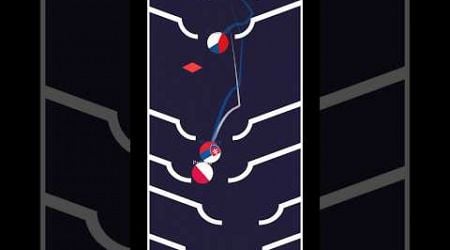Bratislava icon goes viral for the wrong reason
Over 100,000 likes on a made-up story about Čumil’s origin story.

One of Bratislava’s most iconic street figures has recently become the unwitting protagonist of a viral fiction story.
Čumil, a statue better known to some as the “Man at Work”, or the “Watcher”, an icon of Bratislava’s Old Town, greets passers-by at the intersection of Panská Street and Laurinská Street. The statue, just 30cm tall and cast in bronze, wears a perpetual, cheerful smile.
In late August, Čumil, a figure not based on any real person, became the subject of an online shaggy-dog story that has been viewed hundreds of thousands of times— if not more. In it, he is painted as a spurned lover who died of a broken heart. It’s hard not to wonder what Čumil himself would have to say about the latest myth spun around him.
 The false post about Čumil (Source: Screengrab by Oscar Brophy)
The false post about Čumil (Source: Screengrab by Oscar Brophy)The post, originally created by a Facebook page called “Sarcasm Factory” has been ‘liked’ almost 130,000 times by early October, and has been copied by other disingenuous pages. It has even been translated into German.
The latest online myth about Čumil
“This statue is in the Slovak capital, Bratislava, in memory of a cleaning worker who fell in love with a girl and left him after he told her about his work!
She did not have the courage to dump him face to face, so she promised to drink coffee with him but broke her promise.
He waited for her every day, at the same time and in the same place. His friends (who knew about it) tried to sympathize and console him. He died few months after out of melancholy and pain.
The city decided to honor him by making this statue and opening a coffeeshop next to it so that people would come to drink coffee with him and express their love, sympathy and their appreciation for his work.“
The story is reminiscent of Greyfriars Bobby, the famous dog of Edinburgh, who supposedly waited by his master’s grave for 14 years after his death and is now commemorated with a statue. There is one problem: this story is patently wrong.
One Čumil, many myths
The true history of Čumil goes back to 1997, when Bratislava’s Old Town was pedestrianised and populated with various statues - Schöner Náci, the Napoleonic Soldier, and Čumil to name a few. Čumil is the creation of Slovak sculptor Viktor Hulík.
He said of his work, “Čumil is an absolutely anonymous figure that I invented because as a teenager I visited the promenade very often and I wanted this figure to be an expression of the well-being, smile and good mood that once reigned here”.
In effect, Čumil is an anonymous observer, a fictitious person meant to represent the happy memories that Hulík had of the promenade running through the heart of the Old Town.
 Prince Charles poses with Čumil in Bratislava in November 2000. (Source: TASR)
Prince Charles poses with Čumil in Bratislava in November 2000. (Source: TASR)This is not the first time the Bratislava statue has been misinterpreted.
In June 1998, just one year after Čumil was installed, a photo of him was sent into The Times Union newspaper, published in Albany, New York. The photo, now lost to history, was submitted by Hilda R. Watrous and her husband Donald, along with the caption, “This street sculpture portrays a member of one of the occupying armies from this country's past.” Not even one year in and he was already having false witness borne against him. According to an interview that Hulík gave to Bratislavské Noviny in 2007, the sculptor “rejected the idea that it should be a soldier, because the supposed helmet is an ordinary woolly hat that is rolled up at the edges. So Čumil is not just any soldier with a helmet on his head, but an ordinary curious person from Bratislava.”
Some time after it was first installed, in May 1999, the accompanying Man at Work sign was installed next to the statue, to stop people from driving into it. Perhaps as well the sign was intended to provide a bit of context. The statue depicted an ordinary city worker watching the passers-by on the street. Perhaps on lunch break, about to crack into some treska s rožkom, that being cod and a bread roll - a common snack for many in Slovakia.
 The Man at Work sign was installed next to the statue in 1999. (Source: TASR)
The Man at Work sign was installed next to the statue in 1999. (Source: TASR)Regardless, many folk legends have sprung up around Čumil. Based on TripAdvisor reviews, he is dismissed by a woman working as a tour guide in the Old Town as “an old bronze statue with the [implication]that ‘he’s peeing in the hole”. A visitor from Canada had heard a completely different story and declared him a “peeping man [...] NOT a Man at Work. He is a criminal, a pervert, and not something to celebrate”, based on the local legend that the statue depicts a man trying to look up people’s skirts.
Given the ahistoricity of the statue in question, it’s no surprise that people project their own meaning on him. Moreover, replicas of the Bratislava statue have surfaced abroad, including in Russia.
Engagement farming
However, none of these legends have been broadcast to hundreds of thousands of people before. The Sarcasm Factory Facebook page has over 1.5 million likes. It’s impossible to know the true number of people that read the post, but it’s probably the most exposure that humble Čumil has ever received in his 28 years.
The rest of content on the Sarcasm Factory page is a classic example of what has been termed by tech analysts as engagement farming. Katie Baker at EM360Tech defines it as “a collection of inauthentic practices used on social media to artificially inflate engagement metrics on a user's posts or profile”.
The Sarcasm Factory page itself posts multiple times a day, with many posts only getting one or two likes. So their perseverance paid off when in a matter of days the Čumil post was delivered to hundreds of thousands of pairs of eyes. The motivation for this is to make money.
Facebook's parent company Meta, like many other social media companies, now offers a revenue sharing program. In effect, if a person consistently posts content that gets a lot of views, they will get a share of the ad money their posts generate. It is impossible to say how much money, if any, the owners of Sarcasm Factory made from the Čumil post.
The Slovak Spectator asked the Facebook page for a comment, but the page has not responded to the request.
Hoaxes and scams and how to spot them
For a view on the ever-evolving world of online misinformation and how consumers can protect themselves, The Slovak Spectator reached out to David Púchovský, an assistant to Progressive Slovakia MP and former police chief Jaroslav Spišiak who runs Hoaxy & Podvody (Hoaxes & Scams), a nonprofit organisation that aims to fight online disinformation by examining specific cases and publicising them on its various social media channels.
“I used to warn people about fake news which causes negative feelings,” Púchovský said, “but this post is only about positive, sentimental and romantic aspects.” Púchovský added that he would recommend people to Google things before they start to believe them. “It seems we are living in the era when it’s necessary to double check everything we read online.”
When asked about the solution to the problem of online misinformation, he said that the responsibility lies with regulators “when fake news touches areas like public health, national security, terrorism, races, minorities and so on - when there is an immediate danger”. He noted that less dangerous fake news, like the Čumil story, is something everyone should be able to solve on their own thanks to critical thinking skills instilled in school. “That’s something we are severely lacking.”
There were many commenters on the original thread trying their best to debunk the shaggy-dog story. But people, even though they seemed to know the real story of Čumil, seemed to prefer having fun with him.
One of the commenters said, “The legend makes the statue more charming. So, if it is not harming anyone, why not let it be?”


































